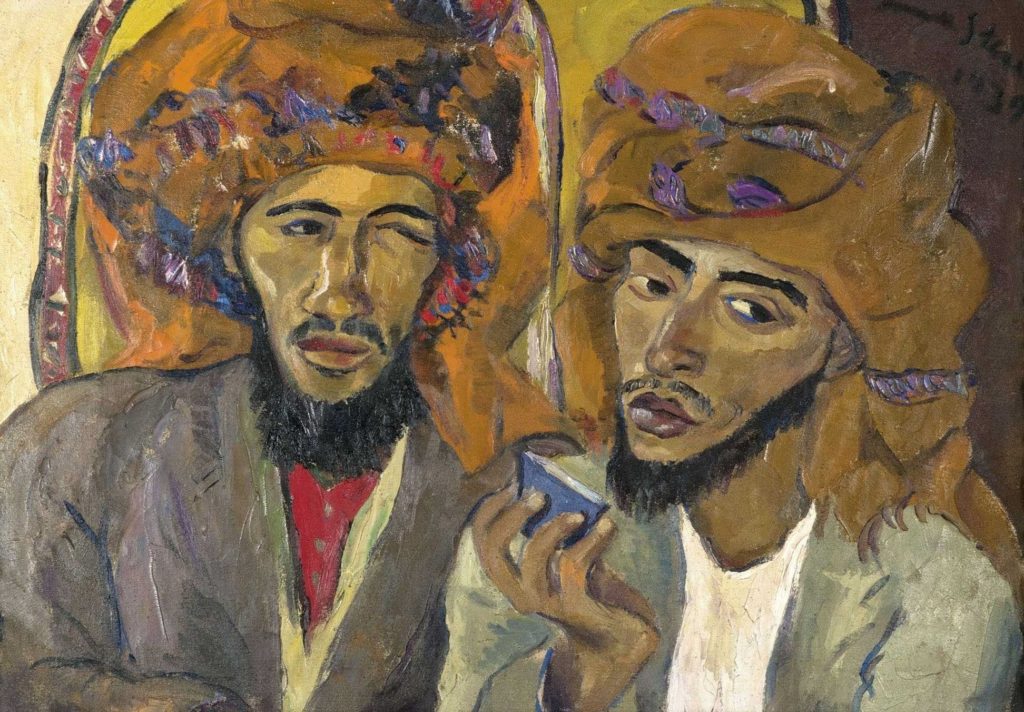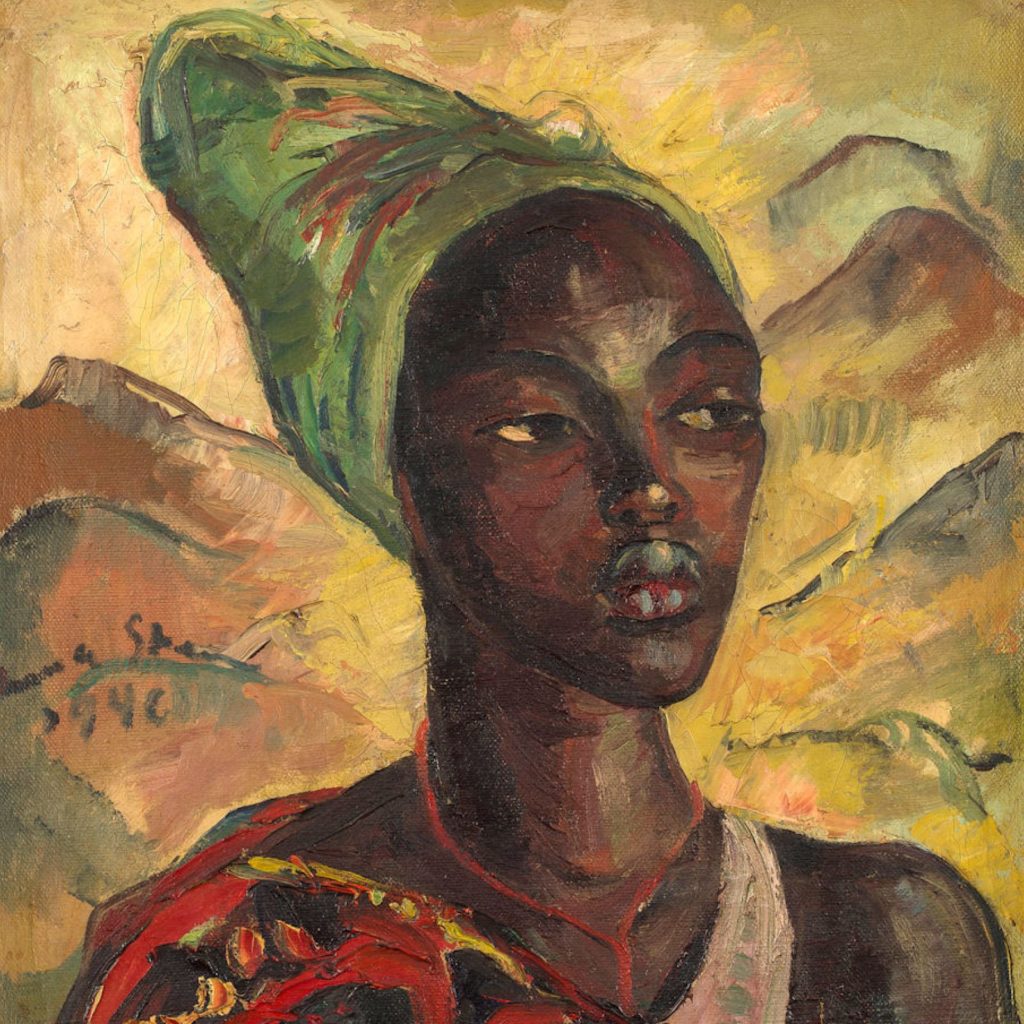Early Life and Artistic Beginnings
Irma Analize Stern, the woman who would go on to become a titan of South African art, first drew breath in the humble surroundings of a small village in Transvaal, South Africa, in 1894. Born to German-Jewish parents who had braved the journey to Africa in 1886, Irma’s life was destined to be coloured by the tension between her European roots and the undeniable pull of her African birthplace.
Even in the early stages of Irma’s life, Berlin was a constant presence, acting as both a familial tether and a conduit for artistic exploration. She and her family found themselves returning to the city repeatedly, reinforcing the strong familial connections they had there. By 1912, Berlin had become more than just a familial retreat for Irma; it was an artistic mecca. That year, Irma decided to permanently plant her artistic roots in Berlin, enrolling at the Weimar Academy before moving on to the Levin-Funcke Studio.
An Influential Encounter
In 1917, Stern’s artistic trajectory would be forever altered by a chance encounter with Max Pechstein, a leading member of Die Brucke, the German Expressionist group. Pechstein’s influence sparked a dynamic shift in Stern’s work, with her formal qualities and use of colour taking a bold, impassioned turn. This new-found expressiveness would come to define her artistic style and set her apart in the art world.
Recognition and Exhibitions
Between 1918 and 1920, Stern’s works began to garner recognition, and galleries around Berlin started to display her pieces. The Fritz Gurlitt Gallery even hosted her first solo exhibition in 1919. By 1920, the pull of home had become too strong to resist, and Stern returned to Cape Town, making her South African debut at the Ashbey Gallery.
From then on, Stern’s prominence in the art world grew exponentially. Her exhibitions were met with resounding approval in Europe and Africa. In 1927, she was awarded the Prix d’Honneur at the Bordeaux Exhibition, and two years later, she was selected to represent South Africa at the Empire Art Exhibition in London.
Travels and Inspirations
Irma Stern’s artistic eye was particularly captivated by the heart of Africa, and she undertook numerous expeditions into the African countryside. Her travels to Zanzibar in 1939 and 1945, and to the Congo in 1942, provided profound inspiration for her evocative and powerful studies of African people and their way of life. These experiences allowed her to bring a unique, authentic perspective to her art, differentiating her work from her contemporaries and solidifying her reputation as a seminal South African artist.
Accolades and Achievements
Throughout her illustrious career, Stern was the recipient of numerous awards, including the Molteno Grant for outstanding work in 1952, the Guggenheim Foundation National Award for South Africa in 1960, the Oppenheimer Award in 1963, and the Medal of Honor of Die Suid-Afrikaanse Akademie vir Wetenskap en Kuns in 1965. Her works were also chosen to represent South Africa at the Venice Biennale multiple times, in 1950, 1952, 1954, and 1958.

Legacy and Influence
Stern’s legacy extends beyond her own works. She was a voracious collector of art and artefacts, and her Cape Town home was transformed into the Irma Stern Museum in 1972, housing her extensive collection. Today, her work is held in public and private
collections all around the world. Her bold and expressive style has influenced countless artists and her pieces continue to command significant, and increasingly record-breaking, prices for South African art.
In 2011, her artwork “Bahora Girl,” an intense portrayal of a young girl from Zanzibar, set a new record for South African art when it was sold for $3.6 million. More recently, in 2020, her “Arab Priest” surpassed all previous records, fetching a staggering $5 million, and marking another milestone for South African art in the international marketplace.
Exploration of Themes
Throughout her career, Stern navigated a myriad of themes, but it was her masterful rendering of the African landscape and its people that truly set her apart. In her artwork, she managed to encapsulate the vibrancy, the rawness, and the beauty of Africa in a way few artists could. This, combined with her German Expressionist influences, resulted in a unique fusion of styles that was distinctly her own.
Moreover, Stern’s empathetic depiction of the African people, their culture, and way of life challenged the predominant European perspectives of her time. In her works, we see an Africa that is not exoticised or ‘othered’, but presented with authenticity and respect. This nuanced perspective is evident in her seminal works such as “The Eternal Child” (1916), “Congolese Woman” (1946), and “Zanzibar Woman” (1939).
Impact on South African Art
Irma Stern’s contribution to South African art is immeasurable. She not only put South African art on the global stage but also shaped the way the world sees Africa. Her work was a testament to the complex identity of South Africans, oscillating between their African roots and European influences.
Her influence on subsequent generations of artists, both within and outside South Africa, is profound. Through her bold use of colour and form, she demonstrated the expressive potential of art, inspiring a new wave of artists to break away from the traditional and venture into the experimental.
Reflection and Conclusion
Irma Stern lived a life of colour, passion, and artistic exploration. From the small village in Transvaal to the cosmopolitan streets of Berlin, she journeyed through different worlds, absorbing, learning, and translating her experiences into striking works of art. Her death on the 23rd of August 1966 in Cape Town marked the end of an era, but her legacy endures, continuing to inspire and captivate audiences worldwide.
Irma Stern was more than just an artist; she was a trailblazer, a cultural ambassador, and a true virtuoso. Her life and work serve as a powerful reminder of the transformative power of art, the beauty of diversity, and the enduring allure of Africa. As we navigate through her diverse body of work, we encounter not just the evolution of an artist, but also a vibrant tapestry of a continent’s history, culture, and soul.


 No products in the basket.
No products in the basket.